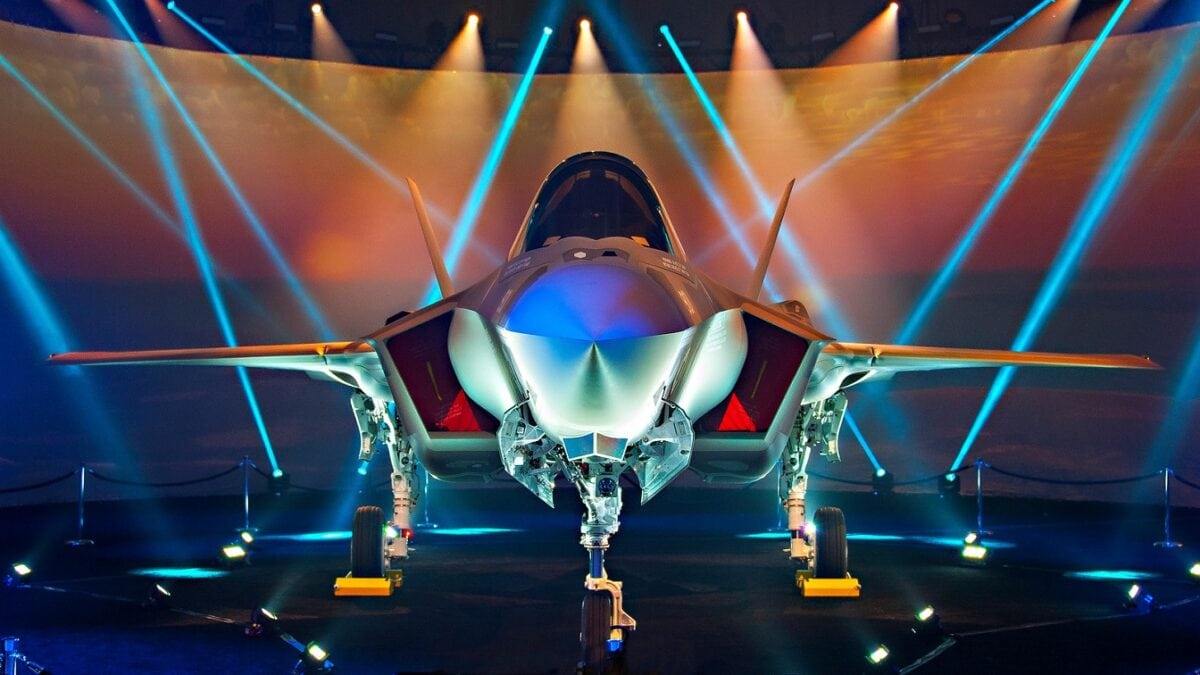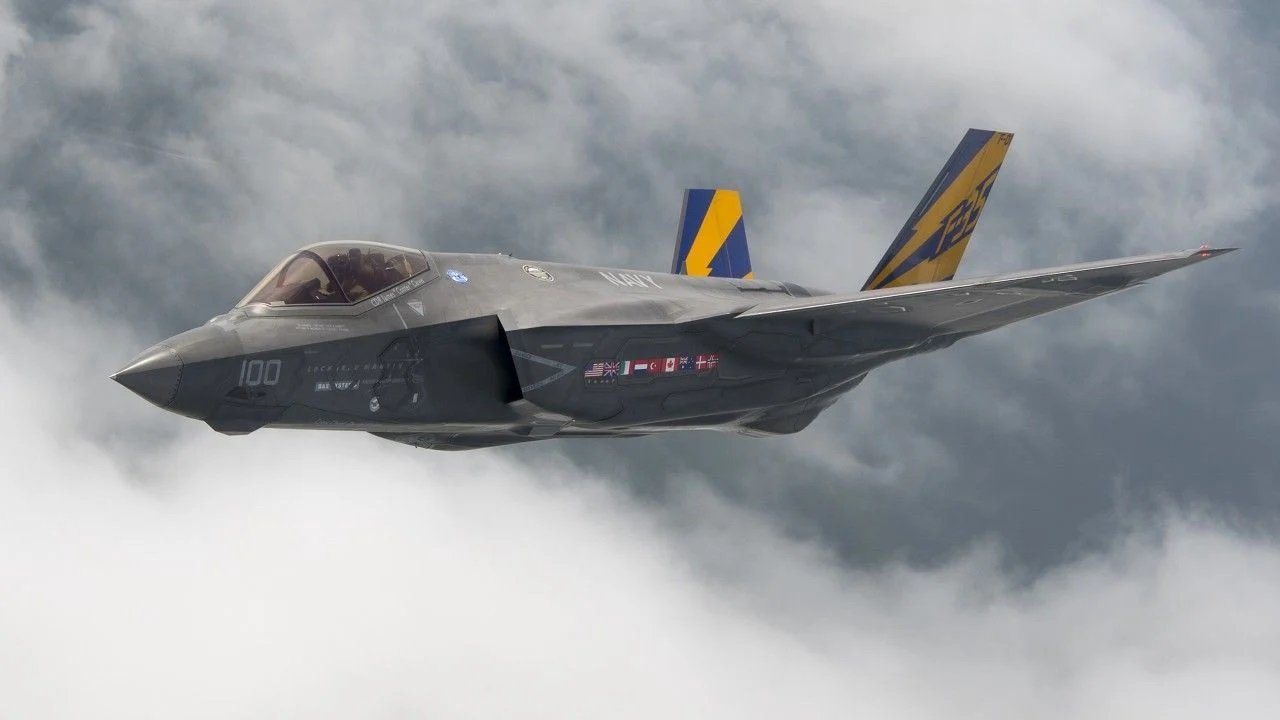Nations worldwide, like China and Russia, want and love stealth fighters like the United States. And yet, we never stop and think about how these planes – like the F-22 and F-35 – are not entirely invisible to enemy radar but have a reduced radar signature. We asked a top expert what that means in theory and practice:
Stealth fighters like America’s F-35 Joint Strike Fighter and F-22 Raptor are often touted as being “invisible on radar,” but they’re actually not invisible at all. In fact, all of today’s modern stealth fighters, including China’s J-20 and Russia’s Su-57, are pretty easy to spot on even dated early warning systems that have been in service for decades.
Stealth designs minimize an aircraft’s radar signature, delaying and sometimes even preventing detection, but because of the physical requirements for tactical jets, stealth fighters can be easily spotted by certain low-frequency radar bands.
In fact, it’s not even uncommon for air traffic control radar to be able to spot stealth fighters on their scopes. And we’re not just talking about when these aircraft are carrying external munitions or fuel tanks, rather, even in full-on “stealth mode,” F-22s and F-35s aren’t as sneaky as you might think.
But they are very tough to shoot down.
The bottom line
“Does the mission require a cloaking device or is it OK if the threat sees it but can’t do anything about it?
-Unnamed U.S. Navy Officer as quoted by Dave Mujamdar for War is Boring.
Modern stealth fighters are designed to delay or prevent detection from radar arrays that are capable of providing a “weapons-grade lock,” — in other words, radar arrays that can guide a missile to a target. Lower frequency radar arrays are not capable of guiding weapons with this sort of accuracy but are capable of spotting stealth fighters.
As a result, most nations operate early warning systems that can identify stealth fighters in their airspace, they just lack the means to effectively target them. Using these radars in conjunction with other systems and targeting methodologies can feasibly allow someone to engage stealth fighters, and that’s why mission planning is essential for all stealth air operations.
Read on for a more in-depth explanation below.
Stealth is more complicated than you probably realize
Stealth is often discussed in a singular sense, as though it’s one technology that can be incorporated into an aircraft’s design. But stealth (or low-observability) is actually a combination of overlapping technologies, design traits, materials, production methodologies, and combat tactics all intended to delay or preventt detection. Developing a stealth platform is a constant battle between cost, capability, and the limitations of existing technology — which means no stealth platform is truly invisible.

F-35I Adir. Image Credit: Creative Commons.
In a general sense, stealth is a term used to describe efforts made to reduce an aircraft’s radar, infrared (heat), acoustic, and even visual signatures.
“The ideal for a stealth aircraft is to reduce the signature in all aspects. All-aspect reduction is valuable because enemy fighters and ground-based air defenses might observe the attacking aircraft from multiple angles as the aircraft flies its mission. However, in practice, signature reductions are not uniform. Aerodynamic trade-offs also force compromises in signature reduction.”
“The Radar Game: Understanding Stealth and Aircraft Survivability” by Rebecca Grant, Mitchell Institute, 2010
Radar systems work by broadcasting electromagnetic waves in pulses and then measuring those waves when reflected back by an aircraft or weapon. Stealth fighters are designed to deflect these radar waves away, rather than directly back at the receiver.
While it’s commonly understood that stealth aircraft are designed to delay or evade radar detection, how they go about doing so is usually more complex than the sort of stuff discussed in polite dinner conversation.
Because electromagnetic waves can be broadcast at different wavelengths and frequencies, they interact with bodies they encounter in different ways, forcing designers to make compromises regarding the types of radar they want their fighters to avoid.
Stealth fighters are only designed to limit detection against specific kinds of radar
Different radar arrays broadcast in different wavelengths and frequencies for different reasons. The types of design elements that can help delay or prevent detection from one type of radar won’t necessarily help prevent detection from another.
As a result, stealth fighter designs are specifically intended to limit detection from the types of radar arrays that can effectively guide a weapon to its position. While stealth aircraft are still not invisible to radar arrays that work within these bands, the goal is to make their radar returns small enough to delay detection, allowing the stealth fighter to either engage or escape without ever being targeted.
Radars operate by broadcasting electromagnetic energy (radar waves) in the L, S, C, X, or K bands. Each band leverages a different wavelength and frequency, with only higher frequency (smaller wavelength) systems providing the image fidelity needed to accurately target an aircraft.
In other words, only certain types of radars can be used to guide a missile toward a target and get it close enough to destroy it. Lower frequency arrays are often capable of spotting stealth fighters in the air, but because of their larger wavelengths, they can’t provide accurate enough data to actually lock onto an aircraft with a missile.
Stealth fighter designs only limit detection against higher frequency radar arrays, including parts of the S band and the C, X, and Ku bands to prevent being targeted. Because these fighters are still visible on lower-frequency radar bands like S and C, they can be leveraged effectively as early warning systems, notifying defensive forces that stealth fighters are in the area, and allowing for other defensive systems to be oriented in the right direction.
In fact, because most air traffic control towers operate radar arrays in the S band, they can often spot stealth fighters without much difficulty.
In other words, it’s not particularly difficult to spot an inbound stealth fighter using even quite dated low-frequency radar arrays, but actually shooting them down is another question entirely. Low-frequency arrays aren’t capable of guiding a weapon accurately to a fighter-sized target. They can only point in a general direction and say, “there’s a target over there.”
Because stealth fighters are detectable, mission planning is essential
While among the least-often discussed elements of operating stealth fighters in combat, mission planning is absolutely essential to successful stealth operations.
“Preparing our mission with the best plan possible, with the best data possible, is important because that can reduce challenges and errors, as variables on the battlefield inevitably change,” explained Lt. Col. Christopher Conant, 393rd Expeditionary Bomb Squadron commander said in an interview with DVIDS.
“Our mission planning philosophy combines the tenants of flexibility with a holistic perspective on how to execute a joint air campaign.”
As should be evident by now, stealth fighters are not invisible, even to radar, so it’s essential that stealth fighter operations involve a great deal of mission planning. Effective mission planning calls for good intelligence of the battlespace, so pilots can plan their route to and from a target in a way that leans into their aircraft’s strengths and away from its weaknesses.
“In the B-2 community, we say ‘mission planning is our primary tactic’ and our quality of mission planning is what sets us apart,” Conant added.
Because stealth bombers don’t have to have the same sorts of control surfaces required of fighter designs, they are actually harder to detect even by low-frequency radar arrays, despite their greater size. Despite that, however, mission planning remains a priority.
So even if you’re flying in the F-22 Raptor, widely considered to be the stealthiest fighter ever to take to the sky, you still can’t just fly into contested airspace without a plan. Stealth is a toolbox full of handy capabilities, but it’s not a blanket solution for all the problems combat may present.
Alex Hollings is a writer, dad, and Marine veteran who specializes in foreign policy and defense technology analysis. He holds a master’s degree in Communications from Southern New Hampshire University, as well as a bachelor’s degree in Corporate and Organizational Communications from Framingham State University. This first appeared in Sandboxx.

